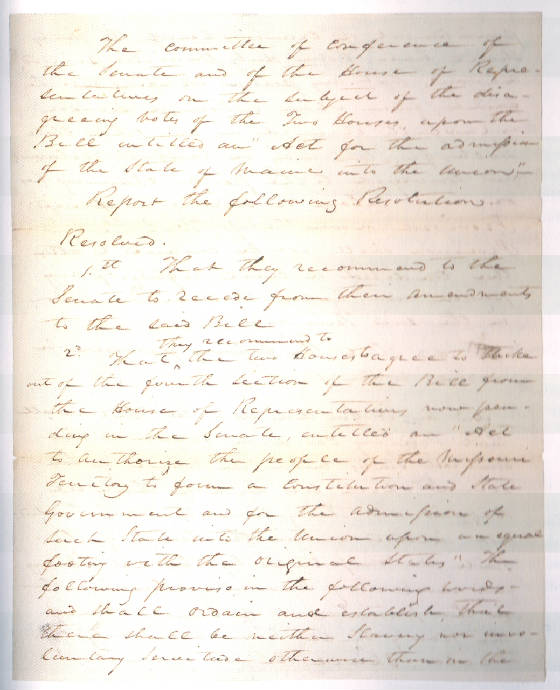|
|
The Compromise of 1820, a legislative landmark, is closely associated with the work of Speaker Henry Clay, the Great Compromiser. Statehood and sectional divisions were key issues facing the new nation. This Compromise allowed a mathematical balance to be achieved between slaveholding states in the Senate. Still, the Three-Fifths Compromise (later repealed) increased the number of Southern Congressmen at the expense of their constituents, who had no voting rights. Fugitive Slave Laws would play a role in Clay's bookend work, the Compromise of 1850.
.
|
||||||||||||||

